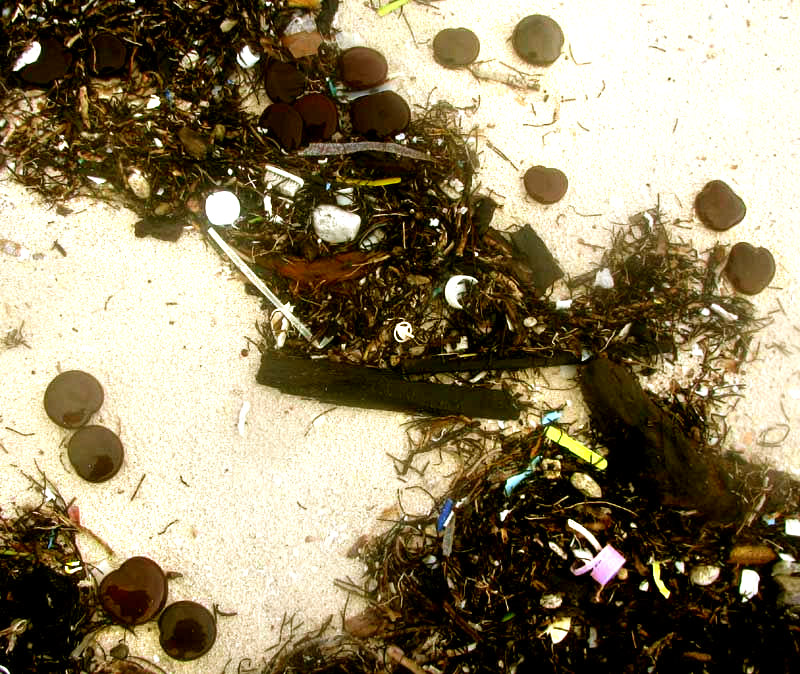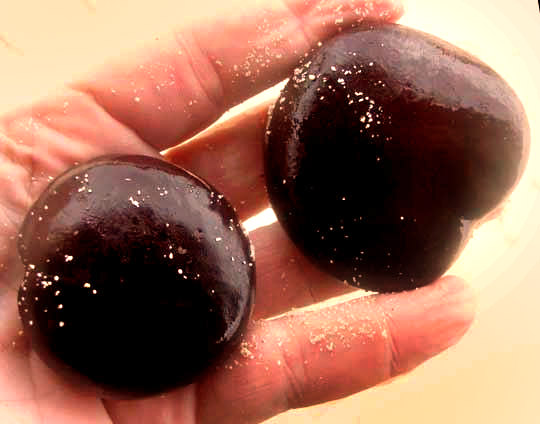Excerpts from Jim Conrad's
Naturalist Newsletter

from the October 30, 2011 Newsletter issued from Mayan Beach Garden Inn 20 kms north of Mahahual; Caribbean coastal beach and mangroves, ~N18.89°, ~W87.64°, Quintana Roo state, MÉXICO
SEA HEARTS
Probably Hurricane Rina also was behind what washed up Wednesday morning as the rains began -- what's shown above. That's a typically messy tangle of seaweed and washed-up plastic trash attended by an astonishing collection of flattish, Oreo-Cookie-size seabeans called Sea Hearts. Typically you're lucky if you see one or two on a beach walk but for some reason that day untold thousands washed onto our beach!
Sea Hearts are true botanical beans produced in legumes of Bean Family woody vines, or lianas. The lianas are widely distributed throughout wet lowland forests of the New World tropics, but not here in the Yucatan. The lianas producing them are ENTADA GIGAS, often called Monkey Ladder Vine, and are famous for their enormous legumes, or seedpods, which can reach 6.5 feet in length (2m). Inside the pods reside ten to fifteen beans. Below, you can see a couple of vaguely heart-shaped beans in my rain-puckery, rain-bleached hands below:

These seeds contain hollow cavities enabling them to float, so they wash into rivers and then the ocean. Studies show that they remain viable for at least two years, and of course during that time they can float great distances on ocean currents.
In fact, this is another species that despite all the seabeans strewn along our beach this week doesn't grow in the Yucatan Peninsula. Still, because the seeds are so mobile on ocean currents, the liana that produces them occurs not only throughout much of South and Central America, and the Caribbean, but also Africa.
The beans float far beyond the tropics. One legend is that a Sea Heart that floated ashore in Europe inspired Columbus to set forth in search of lands to the west. To this day Sea Hearts are called "Fava de Colom" or "Columbus bean" by Portuguese residents of the Azores. Also, in Norway, a bitter tea traditionally was made from sea hearts, and in England they were used as teething rings and as good luck charms for sailors setting off on long sea voyages.